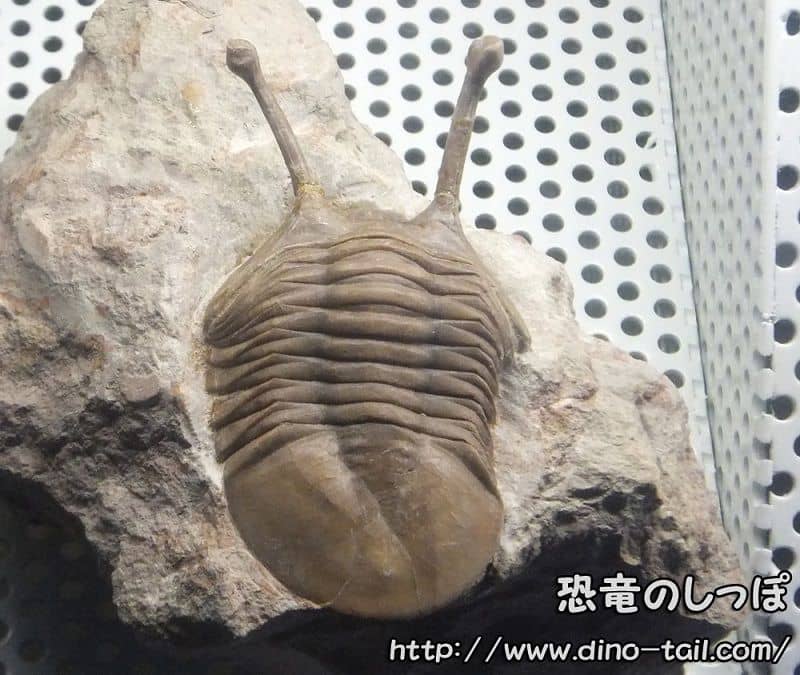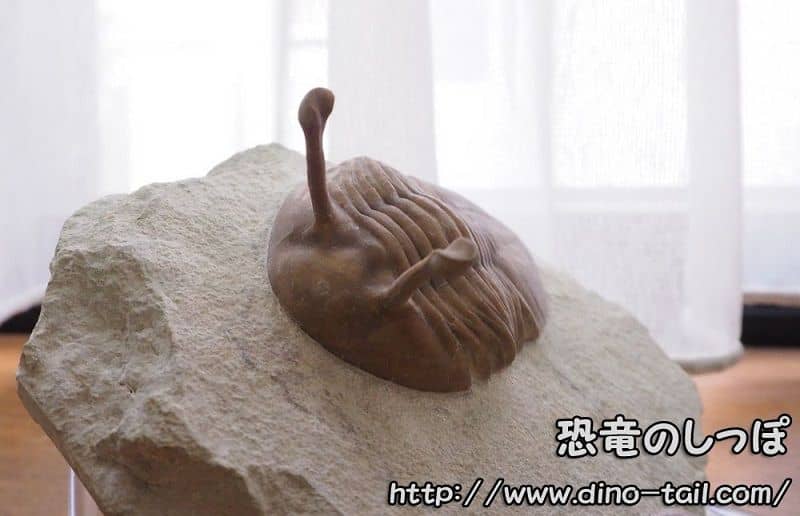About Asaphus
| Scientific Name (Genus) | Asaphus |
| Meaning of Name |
Indistinct
Derived from asaphēs (indistinct) [Greek] |
| Classification | Trilobita - Asaphida - Asaphidae |
| Period | Early to Late Ordovician |
| Sub-classification / Species Name |
Asaphus expansus
(Type species)
acuminatus broeggeri bottnicus cornutus holmi heckeri intermedius kowalewskii latus punctatus sulevi *And many other known species |
| Year of Paper Publication | 1822 |
| Genus Name Publication |
Des corps organisés fossiles nommés trilobites.
In Desmarest, Anselme-Gaëtan. Histoire naturelle des crustacés fossiles. Paris. by Brongiart, Alexandre, 1822. |
Features
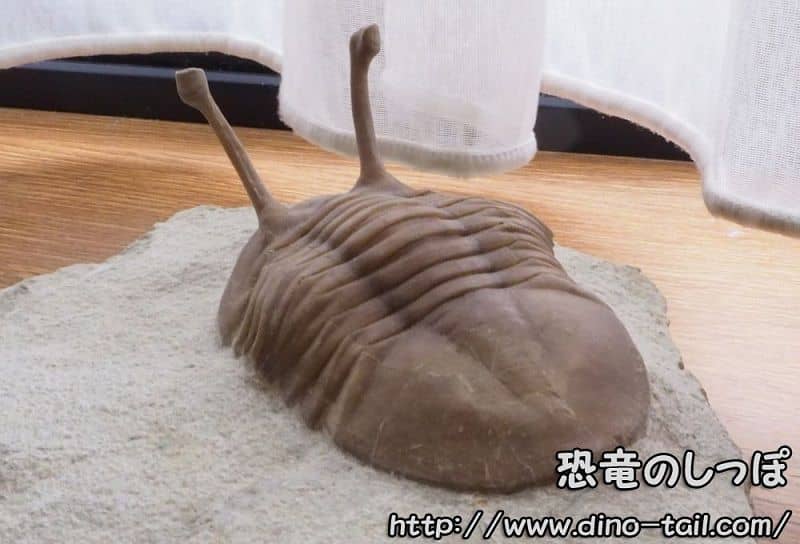
From Russia
My Collection
Over 20 species have been identified in the genus Asaphus, including Asaphus cornutus, Asaphus punctatus, Asaphus lepidurus, Asaphus expansus, Asaphus holmi, and Asaphus intermedius.
They are commonly found in Late Ordovician strata (about 468-470 million years ago) stretching from Northern Europe to Russia.
In particular, Asaphus from the Volkhov River area near St. Petersburg, Russia, retain their caramel-colored exoskeletons, which were replaced by calcite during the fossilization process, on a whitish matrix.
This color contrast is said to be a factor in their popularity.
It has eight thoracic segments. It has been suggested that the larvae may have been planktonic.
Periscope: The Evolutionary Race
The most striking feature of the genus Asaphus is the remarkably different length of the eye stalks among species. This diversity is thought to be the result of a "evolutionary race" that unfolded on the Ordovician seabed over millions of years.
Early Form: Asaphus expansus
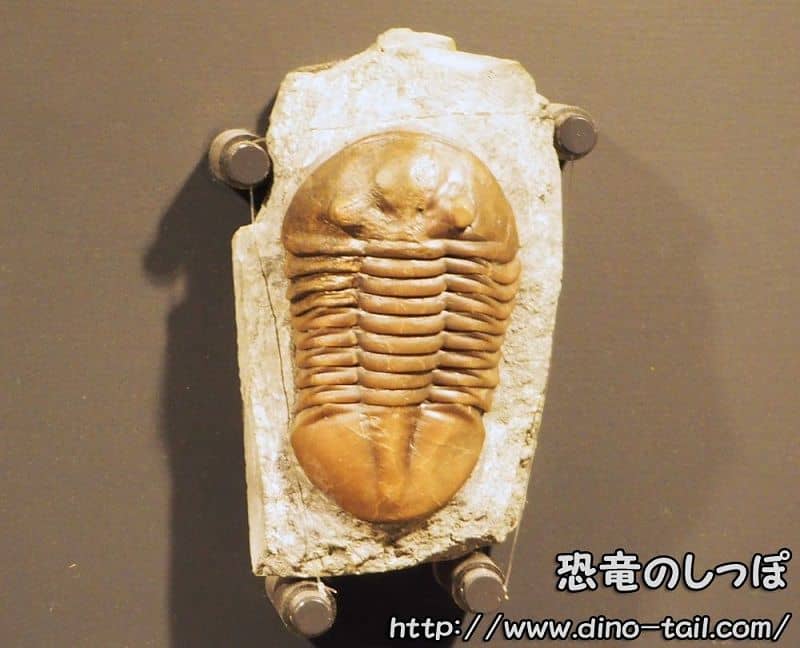
From Sweden
Collection of the National Museum of Nature and Science
Asaphus expansus ( A. expansus ) , the type species of the genus Asaphus, was one of the earliest species to appear. Their eye stalks were not yet very long, and they had a flat body.
Another characteristic of Asaphus expansus is a single spine on the back of its head.
Pinnacle of Evolution: Asaphus kowalewskii
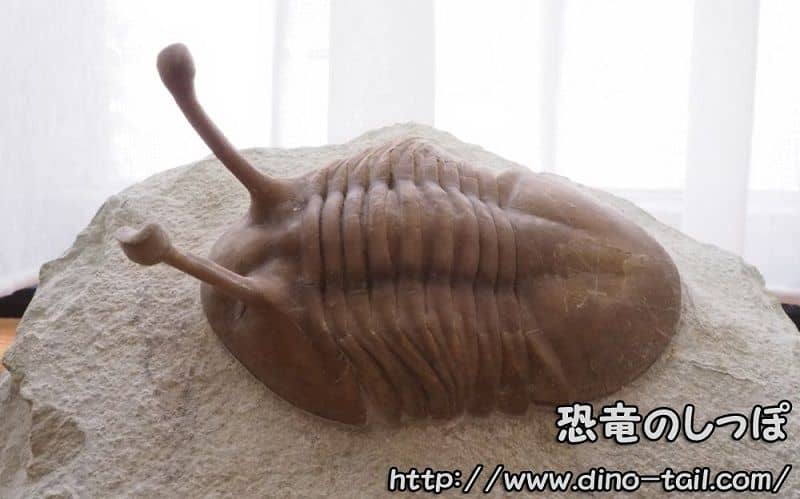
From Russia
My Collection
As time went on, more sand and mud accumulated on the seabed due to the activities of other organisms. To adapt to this, Asaphus developed a survival strategy of hiding their bodies in the sand and mud, sticking out only their eyes like periscopes to watch for prey and predators. The eye stalks grew longer and longer to allow them to burrow deeper.
At the pinnacle of this evolution is Asaphus kowalewskii ( A. kowalewskii ) , which has extremely long, snail-like eye stalks. Also, various species of Asaphus with medium-length and short eye stalks coexisted during the same period. This is considered evidence that each species skillfully coexisted by utilizing different niches of "burrowing depth" in the sand and mud.
Asaphus lepidurus
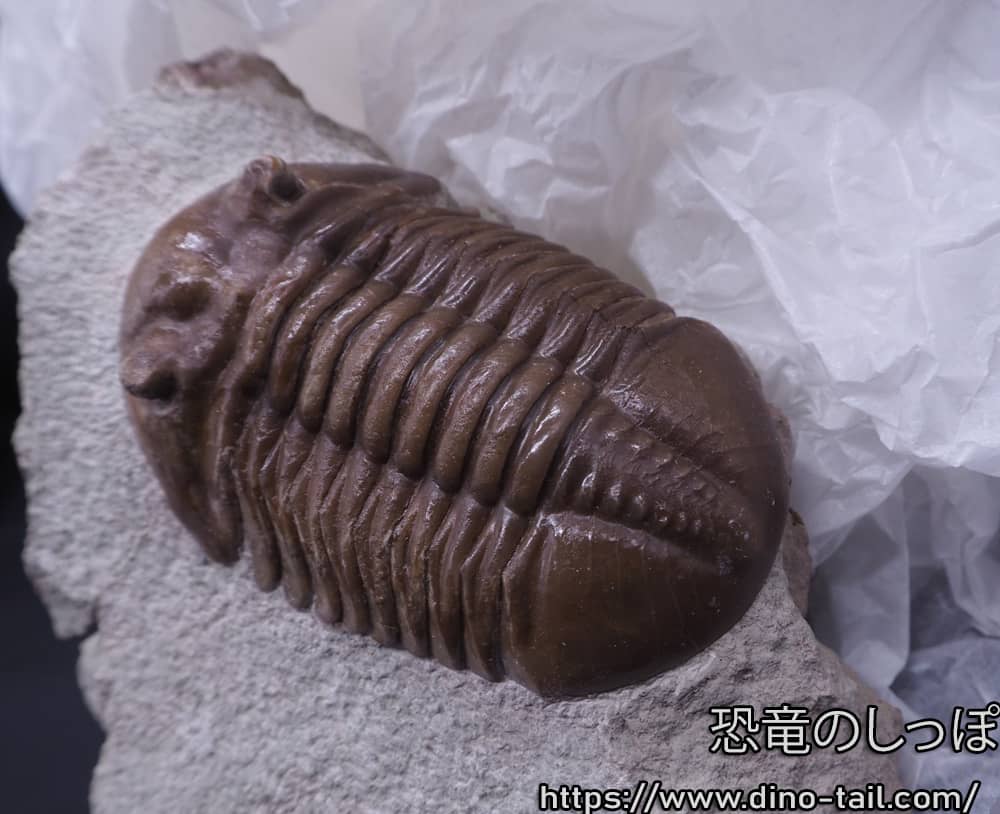
From Russia
My Collection
Among the more than 20 species of Asaphus described to date, it is the second oldest after A. broeggeri, living in the Early Ordovician (about 480 million years ago). It is considered the common ancestor of many subsequent Asaphus species.
First Paper Description of Asaphus
Source: Des corps organisés fossiles nommés trilobites.
by Brongiart, Alexandre
In Desmarest, Anselme-Gaëtan. Histoire naturelle des crustacés fossiles. Paris: L.-T. Cellot.
Asaphus was first described in 1822 in the paper "Des corps organisés fossiles nommés trilobites" by Alexandre Brongniart.
Alexandre Brongniart was a French chemist, mineralogist, and zoologist. He studied chemistry related to the manufacture of minerals and ceramics at the Sèvres National Ceramics Factory and expanded his research to the geology of the Paris region and trilobites. He was also the founder of the National Ceramics Museum.
Asaphus Stamp and Fossil Gallery
